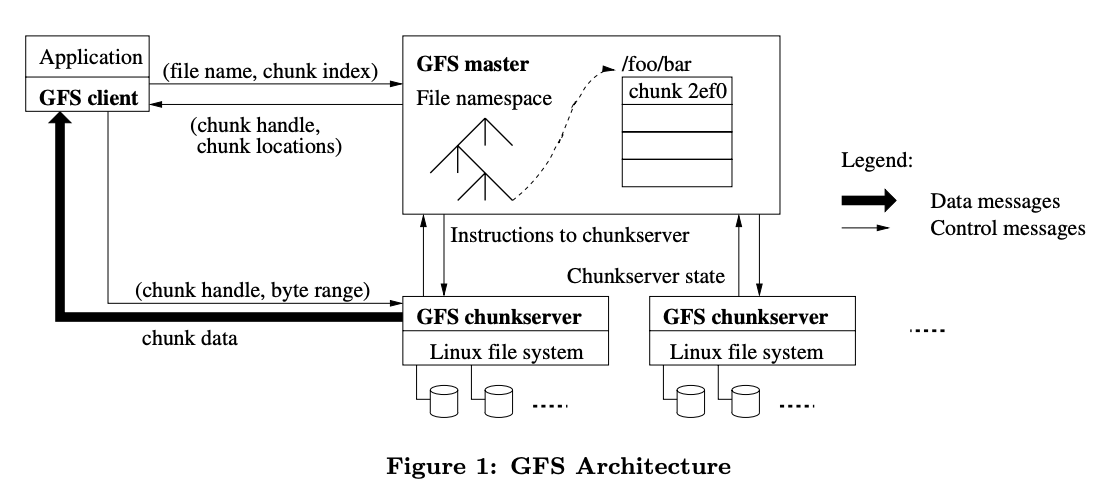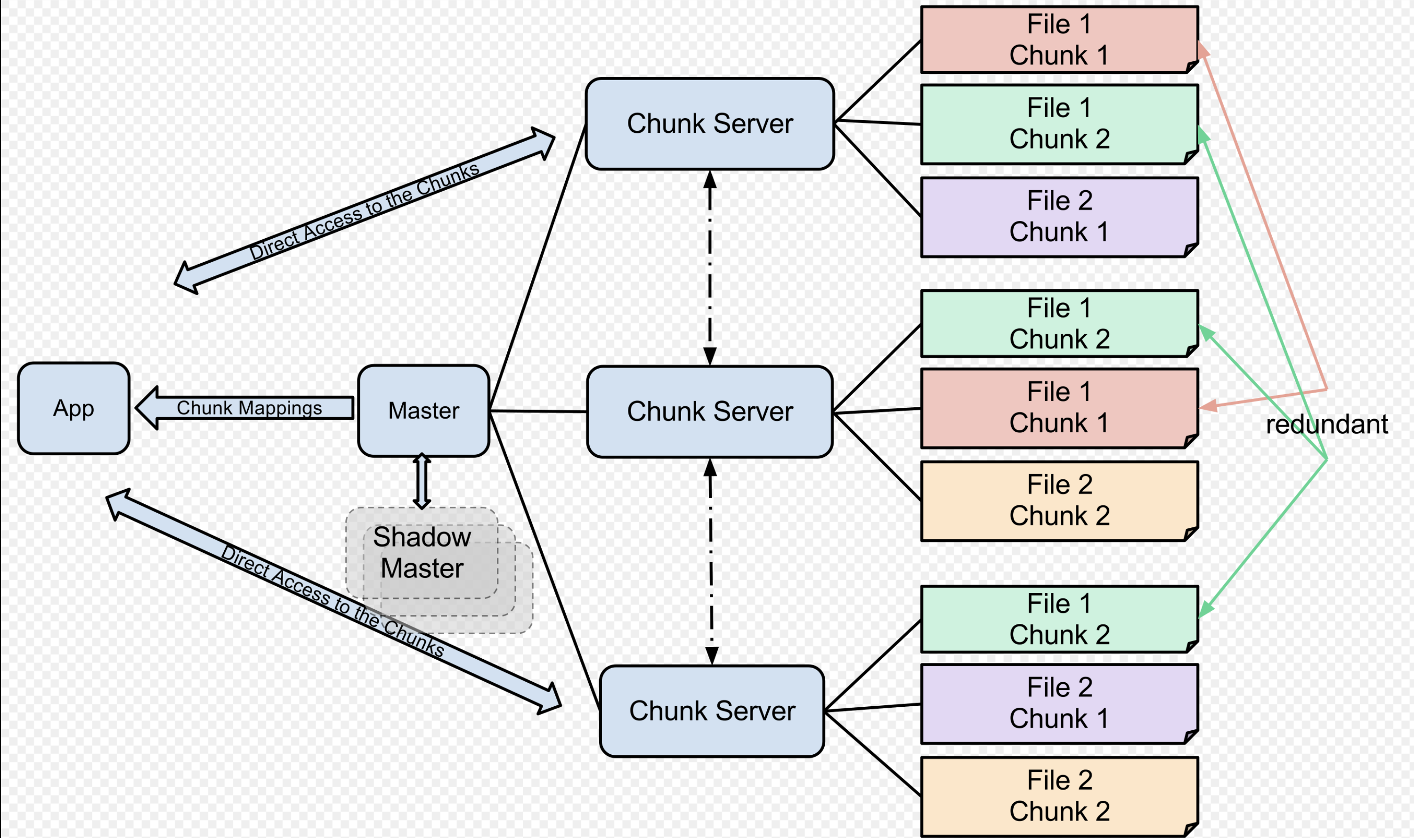Distributed file system
Requirements
- Be able to store large files, several TBs
- Write operations:
- Create a new file
- Append to an existing file
- Update an existing file
- Handle concurrent writes
- Read operations:
- Streaming read
- Random read at any arbitrary offset
- Handle concurrent reads
- HA
Design overview
- Split large files into small chunks with fixed size, e.g. 64 MB.
- Each chunk is tracked by
chunkID(calledhandlein GFS)
- Each chunk is tracked by
- Store the chunks on different distributed servers as the Linux files.
- Have a control plane to:
- Generate the
chunkIDs. - Allocate chunk servers for storing the chunks.
- Maintain the chunk servers discovery metadata.
- Master maintains two mappings:
- file name -> array of chunk ids/handlers
- id/handler -> [
list of chunk servers,version #,primary chunk server,lease expiration]
- Master maintains two mappings:
- Generate the
- Have a client lib which is used by application for data IO. No data goes through control plane node.
High level architecture


Write flow
- Application wants to write a new file(
fileOffset=0) or append data to an existing file(fileOffset=filesize).- Application uses client lib to calculates the
chunk indexbased on offset. - Application uses client lib to send the write request(
file name, chunk index) to control plane.
- Application uses client lib to calculates the
- Control plane receives the request.
- From the file name and chunk index to get the
chunk ID. Generate a newchunk IDif no entry found in the map, it means that the write operation is writing a new file. - From the
chunk IDto get thelist of chunk servers. - Return the
chunk IDandchunk server locationsback to client.(The chunk servers hold the replicas)
- From the file name and chunk index to get the
- Client writes data directly to all chunk servers with the request(
chunk ID,chunkOffset,data). See more details on how to handle concurrent writes and how to handle write failure
how to handle concurrent writes
Multiple applications could write data to the same file at the same time, we want data to be consistent between all replicas. There are two principles:
- All replicas need to apply the change in same order.
- Version number could be used for optimistic concurrency control.
The problem becomes the distributed consensus problem. We could choose to use leader based replica solution and use Raft algorithm to guarantee the data consistency among all replicas. So that during write operation, client could write data to leader and leader will take care of the date replication. This helps reduce the network traffic between the client and chunk server, the network bandwidth within chunk servers would be fast because it is the internal network.
how to handle write failure
- Client fails to write to leader chunk server. We could retry with the exponential backoff with jitter.
- Leader chunk server fails to write to followers. If implementing Raft algorithm, the failure will be handled by leader with retries. So this is eventually consistent.
Read flow
- The client sends file name and offset to the control plane.
- Application uses client lib to calculates the
chunk indexbased on offset. - Application uses client lib to send the write request(
file name, chunk index) to control plane.
- Application uses client lib to calculates the
- Control plane receives the request.
- From the file name and chunk index to get the
chunk ID. - From the
chunk IDto get thelist of chunk servers. - Return the
chunk IDandchunk server locationsback to client.(The chunk servers hold the replicas)
- From the file name and chunk index to get the
- Client caches the result for future reads.
- Client choose the closest chunk server to read the data.
APIs DataNode|chunk server has
- replicate file chunks to other nodes
- remove local file chunk replicas
- re-register or to shut down the node
- send an immediate file chunk report to control plane
- send heartbeat to control plane
How to handle control plane failure
- In Kafka, the control plane called
NameNode, there is also aBackupNodeholds the replicated data ofNameNode. IfNameNodefails,BackupNodehas the replicated data. The paper does not mention how it fails over. However, using Raft leader election might be also a good idea. - In GFS, the control plane called
GFS Mater, it has replicas on multiple machines. If it is just process failure, it could be restarted immediately. If it is machine failure, the monitoring infra will start a new master process on different replicated machine.
How to handle chunk server|DataNode failure
- Each file chunks are replicated to different machines.
- Process failures are restartable.
- Machine failure will cause the data lost on that machine.
- There are Heartbeats between control plane and server where the replica is located. So that control plane knows if there are any chunk servers are not available. If client sends a read requests, the control plane could return available server list.
What will happen if adding a new server
- New server is empty.
- File chunks will be rebalanced to new server. E.g., if there are two replicas of a same file chunk located on the same server, they will be rebalanced to different servers.
- If replica factor is changed, e.g., from 3 to 5, each file chunks will be copied to the new server. The file chunks could be copied in parallel.